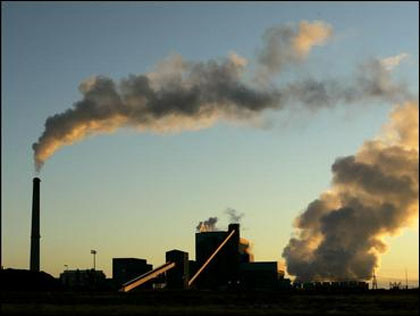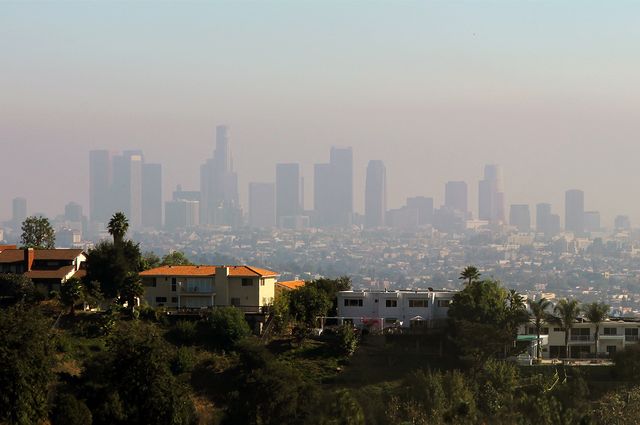Atmospheric fine particle mass mostly originates from emissions from motor vehicles, wildfires and other combustion processes. When emissions are exposed to oxidants and sunlight, they evolve chemically and physically to generate secondary particulate matter. Dr. Allen L. Robinson, Head of the Department of Mechanical Engineering at Carnegie Mellon University, shared results from their investigations of atmospheric evolution of emissions at the SOCAAR Seminar on February 1, 2017. Continue reading
Tag Archives: air pollution monitoring
Impacts assessment to support policy-making across scales: regional implications of global mercury policy

Source: CBS
Mercury is a toxic pollutant that poses risks to both human health and the ecosystem when emitted into the air and water. Public policies and treaties have been established in attempt to address these impacts. In the 1990s, Canadian policies targeting emissions from the metal production industry resulted in a reduction in mercury emissions. Recently, the United Nation’s Minamata Convention that was adopted in 2013 is expected to have shifts in the mercury emissions on a global scale. Continue reading
Global and urban measurements of greenhouse gases

Source: Slices of light/Flickr
The flow of carbon between the atmosphere, oceans, and land is known as the Carbon Cycle. The cycle is influenced by changes in carbon sources and sinks: fossil fuel burning; land use changes; plant respiration and photosynthesis; ocean uptake and release. Carbon sources and sinks can be quantified and monitored for long term trends from atmospheric measurements of carbon dioxide.
Dr. Debra Wunch, Assistant Professor at the University of Toronto’s School of the Environment & Department of Physics, presented the global and urban measurements of greenhouse gases at the October 5th SOCAAR Seminar.
Continue reading
Are lower levels of CO2 but higher black carbon emissions worth the climate trade-off of fuel-efficient engines?

The adoption of fuel efficient engines like the spark ignition gasoline direct injection (GDI) engine has gained popularity recently because of increasing regulations on CO2 emissions from fuel combustion. In 2011, the United States Corporate Average Fuel Economy standards tightened to reduce CO2 emissions. Between 2009 and 2015 sales of new vehicles with GDI engines have increased from five to 46 per cent in the United States, as an alternative to the traditional port fuel injection (PFI). It’s projected that by 2020 over 50 per cent of vehicles will be equipped with GDI engines.
New research from the University of Toronto’s Faculty of Applied Science & Engineering show how GDI engines may emit lower levels of CO2 but more black carbon, a climate-warming pollutant. Continue reading
The influence of clothing on exposure to methamphetamine, phthalates and nicotine

Aside from inhalation, exposure to indoor air pollutants through skin and oral routes can also be significant. Exposure through skin and oral routes become important for lower volatility chemicals like methamphetamine, phthalates, and nicotine. In the March 22 SOCAAR Seminar Dr. Glenn Morrison, a professor at Missouri University of Science & Technology, spoke about the influence of clothing on exposure to methamphetamine, phthalates and nicotine. Continue reading
Air quality co-benefits of climate policy

Photo source: Conventional to Conscious blog
Air pollution is the leading global environmental health risk factor according to the World Health Organization. Implementing policies that reduce greenhouse gas emissions can also reduce the outdoor levels of air pollutants that harm human health by targeting the same emission sources. Dr. Rebecca Saari, an Assistant Professor at the University of Waterloo, presented the relationship between climate policies and health co-benefits at the SOCAAR seminar held on March 2, 2016. Continue reading
Measurements and Modeling of Ultrafine Particulate Matter in California
Toxicological studies have consistently found that ultrafine particles are potentially harmful. Yet only recent epidemiological studies have been able to link ultrafine particles to negative public health effects. The difficulty in finding effects in epidemiological studies may be in part because of the population exposure metrics used in previous studies. In the December 2 SOCAAR Seminar Dr. Michael J. Kleeman, a professor at UC Davis’ Department of Civil and Environmental Engineering, presented 15 years of research on the measurements and modeling of ultrafine particular matter in California. Continue reading
Air quality monitoring in Megacities
Dr. Roberto Guardani, a professor at Brazil’s University of São Paulo, gave a special SOCAAR Seminar on October 16, 2015 on the air quality monitoring studies of the São Paulo Metropolitan Area.
The unstable meteorological conditions due to São Paulo’s proximity to the sea makes it difficult to predict the pollutant levels in the area. But Guardani and his research team have worked closely with São Paulo’s Environmental Authority to develop various statistic models to predict ground-level air pollutants from industrial emissions. In his talk, Guardani identified ozone to be the main pollutant in São Paulo, which behaves independently from other pollutants like SO2. He also presented the usage of a neural network-based statistical model, consisting of meteorological variables, to predict the ozone levels and maximum ozone concentrations across the city. Continue reading
Investigating the Role of Transportation Models in Epidemiologic Studies of Traffic Related Air Pollution and Health Effects
It’s widely known that traffic related air pollution is associated with long-term health effects like cancers, cardiovascular or respiratory illnesses. But there’s more that could be learned about the short-term exposure to traffic-related air pollution. In the first SOCAAR Seminar for 2015-16, Marianne Hatzopoulou, Associate Professor in the Department of Civil Engineering at the University of Toronto discussed the application of transportation and emission models to investigate air pollution in the city of Montreal. The main research questions presented were: i) How can we improve measures of exposure? ii) What is the role of integrated transportation-dispersion models? Can transportation models replace atmospheric dispersion modelling? Continue reading
Near-road measurement of traffic-related pollutants

Photo Source: Wikipedia user Aliamizi
Traffic related pollutants were officially classified as carcinogenic by the World Health Organization in 2013. For the many Canadians that live or work near roadways, this could be a risk factor which may negatively impact their health.
Dr. Cheol-Heon Jeong and Jon Wang, both of UofT’s Department of Chemical Engineering and Applied Chemistry, say the concentration of traffic-related pollutants varies with distance from the road; where significant pollution can be detected up to 250 metres from the road. Continue reading

